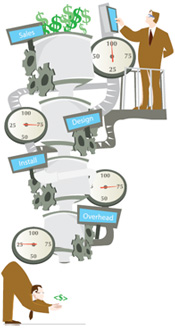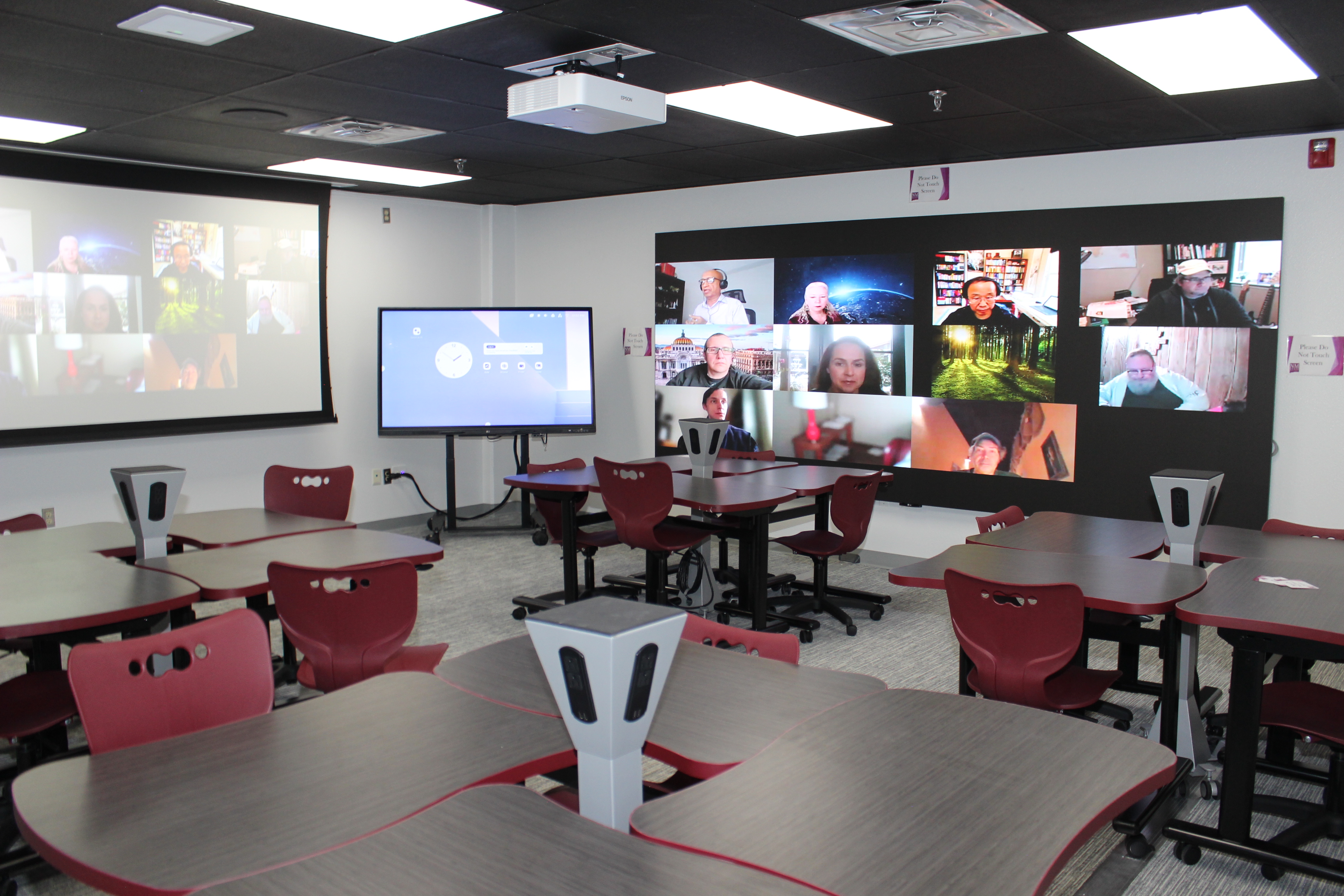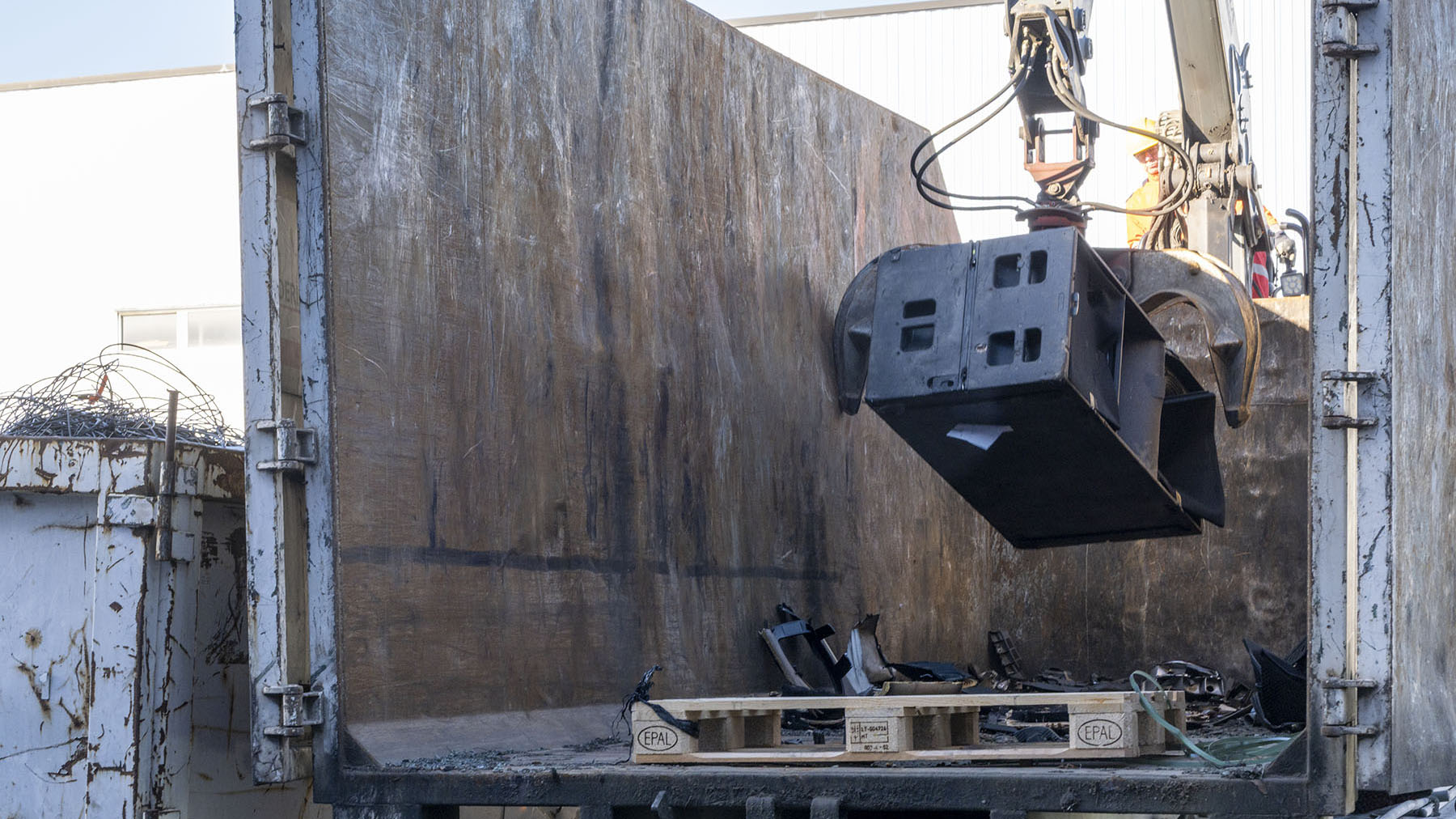Rethinking Sales And Delivery Systems For Integration
by Tom Stimson
If you could generate a complete design and cost estimates with the push of a button and only had to choose which profit to go with, wouldn’t you spend more time trying to win higher margin jobs? Instead, the proposal process is so expensive and time consuming that you end up selling on price instead of your craft.
Don’t blame the sales person or market conditions for this problem. Your biggest obstacle to higher profits is not shrinking margins, nor is it hiding in invoices from suppliers or installer timecards. The thing that keeps you from making the money you have earned is process. A competitor seems to make a profit when you can’t because their process allows them to make money—and yours doesn’t.
What keeps companies from addressing this problem is denial. The sales and design process used by many integrators is a sieve. There are multiple points at which profit can leak out, and the longer a project stays at one point in the process, the more leakage there will be. Your business might be losing profits to this metaphor if you are seeing more than one of these symptoms:
■ A steady backlog of proposals that keeps designers from working on confirmed business
■ Dependence on the “big kill” project to keep top line revenue on track
■ Installation beginning without proper documentation
■ Rack-building or extensive programming on job site
■ The service team has to complete many installations
■ A tendency for certain people (ok, salespersons) to hold onto information instead of sharing it If you track an order through your system from sales opportunity to finished installation and study the handoff points, what you will often find are bottlenecks of over-utilized resources. These are called constraints. Design, engineering, estimating, drafting, and programming are the most common constraints, but in many companies installers end up backlogged as well. Over-dependence on hourly workers shows up in overtime costs, but when your CTS-D logs 70-80 hours every week, you want to believe it’s because they are a workaholic and a perfectionist. In reality the overworked engineer is a highly inefficient use of intellectual resources—a constraint.
The cure for constraints is counterintuitive. Your engineer will probably tell you that he or she needs a lot of dedicated, undisturbed time working on one project at a time. They are mistaken. The right way to correct constraints is to dole work out in smaller batches. Design engineers shouldn’t be working on every aspect of the proposal, especially if they have 10 projects to bid in the queue. If you break down the proposal process into tasks, you might find that your expensive engineers are spending a lot of time doing clerk-ish things: looking up part numbers, finding prices, compiling lists. Sometimes they even do things they are unqualified to do, like labor estimates. They are not alone. We find corollaries to this in sales, project management, purchasing, crew scheduling, drafting, programming, and even accounting.
Whatever the size of the organization, there is an inherent resistance to breaking down tasks for two primary reasons. First, it appears these efficiencies it will actually involve hiring more people and hence, added cost. In general this is not true because while a constraint is in play, someone is waiting. Most companies have the resources in place to support more efficient processes. The second objection to reducing constraints is theoretical. The AV sales-designintegration process is traditionally linear: Each person hands off a completed (or not) task to the next person in line. By breaking down tasks into manageable pieces, the process changes such that a person may touch a piece of the project many times during its life cycle. This is how we overcome the first concern too. You don’t need more people; you do need them to do different things.
Realigning tasks helps ensure that each one is completed, and it also allows more tasks to occur simultaneously. A person that only looks up prices at a particular step will be much more efficient at it than someone that also has to decide which part to use. A project manager might do a more realistic labor estimate than an engineer. And a lead tech will probably do a more thorough site survey than anyone that is doing it now.
I said earlier that shrinking margins weren’t the problem, but they are a symptom. For example, the longer a proposal loiters around the sales pricing stage, the lower the price will go. The net result of a more efficient sales and delivery system is the opportunity to go after more jobs at higher margins. Mistakes are reduced because more people touch the project even before the job is won. Productivity will be up because employees will become accustomed to quickly finishing tasks.
The first step is to admit that you are addicted to the notion that someone else is responsible for your shrinking margins.
Tom (T.R.) Stimson, MBA, CTS, (tom@trstimson.com) is president of The Stimson Group, a Dallas-based management consulting firm. He is the 2010 president of InfoComm International, and a member of NSCA and InfoComm’s adjunct faculty.










